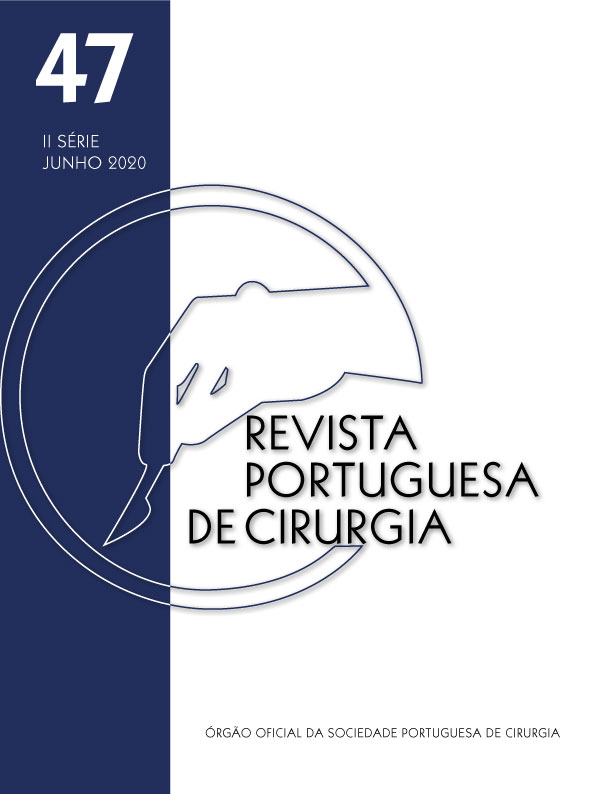BENEFITS OF TELEMEDICINE FOR PATIENTS, HEALTH SYSTEMS AND SOCIETY: THE USE OF TELEMEDICINE FOR CANCER PATIENTS FOLLOW-UP
DOI:
https://doi.org/10.34635/rpc.805Keywords:
Telemedicine; Neoplasms, Health Services Accessibility, Disease management, Follow-up studiesAbstract
Currently, health systems face the enormous challenge of ensuring equitable access to health care, improving the quality of care and lowering the cost of care. Strategies and solutions to achieve this “triple aim” and open the way for the improvement of the health system as a whole, involve adopting innovative strategies that combine disease management, the use of information systems and technologies to improve access care and health outcomes. Telemedicine, when fully integrated into an existing health system, is a powerful tool that can support many patients and help to optimize existing resources. As medical science evolves with new ways responding to patient’s needs, healthcare organizations must keep the patient at the center of their mission by implementing telemedicine solutions that improve their capabilities, extend timely, convenient, affordable and high quality of care. When implemented carefully, a flexible and scalable telemedicine system can enable quality across the entire spectrum of care, from initial screening and primary health care, to hospital specialties and home care. Telemedicine guided by convenience, ease and affordability offers to the health systems a solution for patients and providers to communicate more efficiently, opening new perspectives in cancer patient follow-up of as well other chronic diseases.
Downloads
References
and the Committee of the Regions on telemedicine for the benefit of patients, healthcare systems and society /COM/2008/0689
final/. [cited 2015 Nov 10]. Available from: http://eur-lex.europa.eu/legal-content/EN/ALL/?uri= CELEX:52008DC0689
2. Directive 98/34/EC of the European Parliament and of the Council of 22 June 1998 laying down a procedure for the provision of
information in the field of technical standards and regulations
3. Maddams J, Brewster D, Gavin A, Steward J, Elliot J, Utley M, Moller H: Cancer prevalence in the United Kingdom: estimates for
2008. Br J Cancer 2009, 101:541–547.
4. Beaver K, Tysver-Robinson D, Campbell M, Twomey M, Williamson S, Hindley A, Susnerwala S, Dunn G, Luker K: Comparing
hospital and telephone follow-up after treatment for breast cancer: randomised equivalence trial. BMJ 2009, 338: 3147.
5. Kimman ML, Bloebaum MMF, Dirksen CD, Houben RMA, Lambin P, Boersma LJ: Patient satisfaction with nurse-led telephone
follow-up after curative treatment for breast cancer. BMC Cancer 2010, 10:174.
6. Davison BJ, Degner LF: Feasibility of using a computer-assisted intervention to enhance the way women with breast cancer
communicate with their physicians. Cancer Nurs 2002, 25:417–424.
7. Hegel MT, Lyons KD, Hull JG, Kaufman P, Urquhart L, Li Z, Ahles TA: Feasibility study of a randomized controlled trial of a
telephone-delivered problem-solving-occupational therapy intervention to reduce participation restrictions in rural breast cancer
survivors undergoing chemotherapy. Psychooncology 2011, 20:1092–1101.
8. Sikorskii A, Given CW, Given B, Jeon S, You M: Differential symptom reporting by mode of administration of the assessment:
automated voice response system versus a live telephone interview. Med Care 2009, 47:866–874.
9. Sikorskii A, Given CW, Given B, Jeon S, Decker V, Decker D, Champion V, McCorkle R: Symptom management for cancer patients:
a trial comparing two multimodal interventions. J Pain Symptom Manage 2007, 34:253–264.
10. Harrison JD, Young JM, Solomon MJ, Butow PN, Secomb R, Masya L: Randomized pilot evaluation of the supportive care
intervention “CONNECT” for people following surgery for colorectal cancer. Dis Colon Rectum 2011, 54:622–631.
11. Yun YH, Lee KS, Kim KW, Park SY, Lee ES, Noh DY, Kim S, Oh JH, Jung SY, Chung KW, Lee YJ, Jeong SY, Park KJ, Shim YM,
Zo JI, Park JW, Kim YA, Shon EJ, Park S: Web-based tailored education program for disease-free cancer survivors with cancer
related fatigue:
12. A randomised controlled trial. J Clin Oncol 2012, 30:1296–1303. Kimman ML, Dirksen CD, Voogd AC, Falger P, Gijsen BCM,
Thuring M, Lenssen A, Van Der Ent F, Verkeyn J, Haekens C, Hupperets P, Nuytinck JKS, Van Riet Y, Brenninkmeijer SJ, Scheijmans LJEE, Kessels A, Lambin P, Boersma L: 2011. Nurse-led telephone follow-up and an educational group programme after breast
cancer treatment: Results of a 2×2 randomised controlled trial. Eur J Cancer 2011, 47:1027–1036.
13. Beaver K, Hollingworth W, McDonald R, Dunn G, Tysver-Robinson D, Thomson L, Hindley AC, Susnerwala SS, Luker K: Economic
evaluation of a randomized clinical trial of hospital versus telephone follow-up after treatment for breast cancer. Br J Surg 2009,
96:1406–1415.
14. Kimman ML, Dirksen CD, Voogd AC, Falger P, Gijsen BC, Thuring M, Lenssen A, van der Ent F, Verkeyn J, Haekens C, Hupperets
P, Nuytinck JK, van Riet Y, Brenninkmeijer SJ, Scheijmans LJ, Kessels A, Lambin P, Boersma LJ: Economic evaluation of four
follow-up strategies after curative treatment for breast cancer: results of an RCT. Eur J Cancer 2011, 47:1175–1185.
Downloads
Published
Issue
Section
License
Para permitir ao editor a disseminação do trabalho do(s) autor(es) na sua máxima extensão, o(s) autor(es) deverá(ão) assinar uma Declaração de Cedência dos Direitos de Propriedade (Copyright). O acordo de transferência, (Transfer Agreement), transfere a propriedade do artigo do(s) autor(es) para a Sociedade Portuguesa de Cirurgia.
Se o artigo contiver extractos (incluindo ilustrações) de, ou for baseado no todo ou em parte em outros trabalhos com copyright (incluindo, para evitar dúvidas, material de fontes online ou de intranet), o(s) autor(es) tem(êm) de obter, dos proprietários dos respectivos copyrights, autorização escrita para reprodução desses extractos do(s) artigo(s) em todos os territórios e edições e em todos os meios de expressão e línguas. Todas os formulários de autorização devem ser fornecidos aos editores quando da entrega do artigo.



